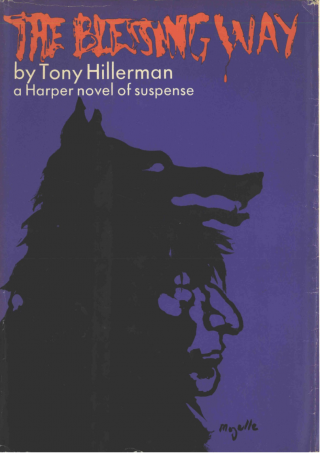What do the Anasazi, high frequency radio waves, and a mouthful of sand have to do with a Navajo Blessing Way? Absolutely nothing, yet it was with such a conjunction of disparate elements that the constellation of Tony Hillerman’s Navajo Detective Fiction was begun, flung into a universe that included the breakup of the Beatles, Apollo 13, massive uprisings both for and against the Vietnam War, and the violent legacies of the Civil Rights movement. Although Native Americans had been active in agitating for civil rights for decades, their participation in the movement remains a sideline in many social, historical, and cultural accounts of the period. Yet Tony Hillerman begins to spin his not-so-tall tales of Navajo land and people during this period, drawing public attention to the rez Indian during a time of urban Indian militancy. Published in 1970, Hillerman’s The Blessing Way initiated readers into a brand of regional mystery writing, where the landscape and the culture defined by it play roles as significant as the pensive and acutely observant Navajo Tribal Police Lieutenant Joe Leaphorn. Actually, in this first novel, Leaphorn takes a relative backseat to his friend and the novel’s protagonist Bergen McKee, an anthropology professor at the University of New Mexico. Thankfully, Leaphorn, and later his trusty sidekick Navajo Tribal Police Officer Jim Chee, take center stage in the ensuing pages of Hillerman’s novels.
So, welcome to the world of Tony Hillerman’s Navajo detectives, where the land is beautiful, the detectives wary, and all things out of balance are a sure sign of “witchcraft.” Or not. Reading Hillerman’s novels today, one still feels the seductive pull of the Navajo Wolf, or skinwalker, yet don’t believe the hype. Hillerman never overplays the cultural signifiers of Navajo spirituality or mysticism. Instead, as do his characters Leaphorn and Chee, Hillerman negotiates the human condition on and off the rez and what it means to inhabit the border region between tradition and assimilation. Hillerman’s objectivity and openness, achieved through his partially-omniscient narrator and the abundance of anthropological and ethnographic materials that enrich his writing, enable his readers to interrogate the value systems that coincide and often collide in his detective fiction. Are there such things and wolves in sheep’s clothing? In Hillerman’s portrayal of the human condition, whether Native or not, men in wolves’ clothing are definitely a possibility.

